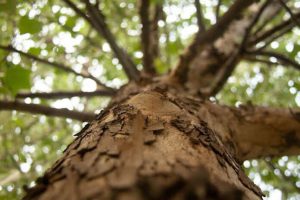Carbon Offset Programs: The Future of Environmental Responsibility
With global warming becoming increasingly more prevalent, there are ways that we can live our lives that will improve to lower our carbon footprint.
We can make our own homes more eco-friendly, we can invest in solar energy, and we can buy energy-efficient appliances.
These will reduce your home’s carbon footprint, you can also install energy-efficient windows, this is a large job, and can take a little time to do, and you will need to move out of your home while they are being installed. You can rent a furnished apartment when you do the project.
Finding Carbon Offset Programs
But we can also invest in carbon offset programs, which are initiatives that aim to reduce the amount of carbon dioxide in the atmosphere.
These programs can be as simple as planting trees to absorb carbon dioxide, or as complex as investing in renewable energy sources like solar and wind power.
Carbon offset programs can be an effective way to reduce the amount of carbon dioxide released into the atmosphere.
These programs involve individuals or businesses paying to fund projects that reduce or eliminate carbon dioxide emissions. For example, individuals can purchase credits that are used to fund projects like reforestation.

Reforestation
Projects like reforestation are essential for the environment, as they help to reduce the amount of carbon dioxide in the atmosphere.
Reforestation involves planting trees and other vegetation in areas that have been deforested. This helps to absorb carbon dioxide from the atmosphere, reducing the amount of this greenhouse gas in the air and helping to combat climate change.
Planting trees is an important part of reforestation efforts, as they are effective at sequestering carbon dioxide from the atmosphere and storing it in their wood and leaves.
Additionally, trees are an invaluable resource for mitigating the effects of climate change. By absorbing carbon dioxide, trees help to reduce the number of greenhouse gases in the atmosphere, which can help to slow the rate of climate change.
Furthermore, trees can help to reduce air pollution by absorbing harmful gases, such as carbon dioxide, and releasing oxygen into the air.
Trees also help to reduce the amount of energy used to cool buildings by providing shade and blocking the sun’s rays.
Additionally, they can help to reduce the amount of energy needed to cool the building, as well as the amount of energy used for heating.
Trees can also help to reduce the urban heat island effect, which is a phenomenon where urban areas are significantly warmer than surrounding rural areas due to the lack of vegetation and the abundance of man-made structures.
Urban Heat Island Effect
This phenomenon is known as the urban heat island effect. It is caused by the fact that cities are composed of large amounts of asphalt, concrete, and other materials that absorb and retain heat from the sun.
There are many different reforestation projects all over the world, each with its own unique approach to restoring the natural environment.
Some projects focus on planting trees in areas that have been deforested, while others focus on restoring and protecting existing forests.
Reforestation projects can also involve the reintroduction of native plants, which is an important part of the process.
This is because native plants are adapted to the local climate and soil conditions, and are often better able to survive and thrive than non-native species.
Additionally, native plants provide food and shelter for native animals, birds, and insects, which helps to maintain the delicate balance of the local ecosystem.
Native Plants
Native plants are also more resistant to local pests and diseases, which can help to reduce the need for chemical pesticides and fertilizers.
Furthermore, native plants are often better adapted to local conditions, meaning they require less water and fertilizer than non-native species.
This can help to conserve resources and reduce the environmental impact of gardening. Native plants can also provide a habitat for beneficial insects, such as pollinators.
There are also mangrove trees, which are a type of salt-tolerant tree that can help to protect coastlines from erosion.
They are also a great way to help create a diverse, healthy ecosystem. Native plants can also help to reduce the amount of water needed for irrigation, as they have adapted to the local climate and soil conditions over time.
This means that they require less water to thrive, as they are already accustomed to the environment. In addition, native plants are more likely to attract beneficial insects, such as bees, butterflies, and other pollinators, due to their familiarity with the local climate, soil, and other environmental conditions.
This is especially beneficial for gardeners who are looking to attract wildlife to their gardens. Native plants also require less maintenance than non-native plants, as they are already adapted to the local climate and soil conditions.
This means that they are more resilient and require less watering and fertilizing, making them a great choice for gardeners who want to reduce their workload.
Investing in Your Home And Carbon Offsets
Choosing a greener lifestyle is important, and the way you live at home is a great way for you to make an impact.
You need to recycle at home, and compost if you can, some cities encourage you to put all vegetable, and fruit waste in green trash cans, so they will limit the amount of waste we send to landfills.
Investing in solar panels, energy-efficient appliances, and installing new windows, can be expensive, with solar panels, there are government incentives, but you will still need to pay, and there are different financial options for you to choose from.
When choosing a carbon offset program, you have many options, but tree planting or tree seedling is very popular.
Helping the Amazon or other forests around the world is important. We can all do our part, but a small monthly investment will make a big difference in controlling global warming.
Read more investing news on PressReach.com.Subscribe to the PressReach RSS feeds:- Featured News RSS feed
- Investing News RSS feed
- Daily Press Releases RSS feed
- Trading Tips RSS feed
- Investing Videos RSS feed
Follow PressReach on Twitter
Follow PressReach on TikTok
Follow PressReach on Instagram
Subscribe to us on Youtube
More News
View More




Recent Quotes
View More
Quotes delayed at least 20 minutes.
By accessing this page, you agree to the Privacy Policy and Terms Of Service.
